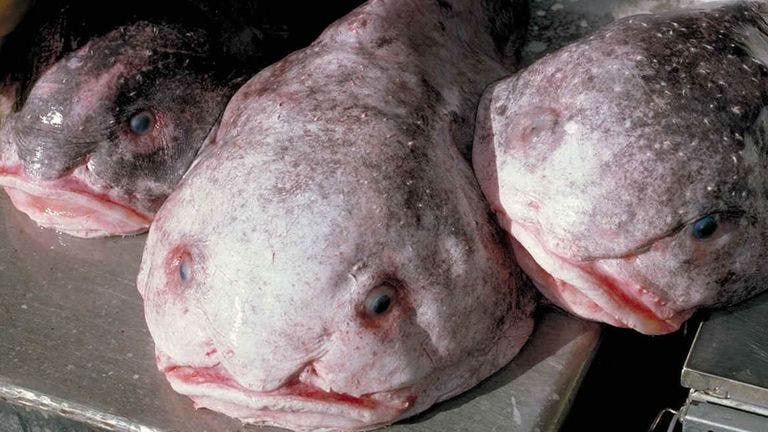Extreme Weekly #16
Transplanted Pigs, GTA Swans, Mozzy Killers, AI & More!
March 30th 2025
And we are back! Hope you have had a great week and now you can sit down and enjoy a small read into the world of peculiar.
Lets go!
01. Metal Man Ventures To The Iron Age
In an astonishing discovery near the village of Melsonby, North Yorkshire, metal detectorist Peter Heads unearthed over 800 Iron Age artifacts dating back approximately 2,000 years. Dubbed the "Melsonby Hoard," this collection includes partial remains of wagons, ceremonial spears, elaborate pony harnesses, and two ornate cauldrons, one believed to have been used as a wine mixing bowl. Notably, some harness pieces are adorned with Mediterranean coral and colored glass, indicating far-reaching connections.
The deliberate destruction and burial of these high-status items suggest ritualistic practices, possibly linked to funerary rites. This find challenges previous notions that pre-Roman northern Britain was less affluent than the south, highlighting the wealth and influence of northern elites and their connections to continental Europe and the Roman Empire.
The Yorkshire Museum has launched a campaign to raise £254,000 to acquire and conserve the hoard, ensuring these artifacts remain accessible to the public and continue to shed light on Britain's rich Iron Age history.
02. Florida Swan Goes Full GTA!
A rogue swan brought traffic to a grinding halt in Orlando when it strutted onto a busy Florida highway during rush hour.
Caught on live traffic cams, the swan held up lanes on State Road 408 and led police on a slow-feathered chase before being captured and safely returned to its lake. Locals are calling it “Florida Swan Energy” and yeh it’s already a meme.
03. From 'Ugliest' to Champion: Blobfish Crowned New Zealand's Fish of the Year
Once labeled the "world's ugliest animal," the blobfish (Psychrolutes marcidus) has swum its way to redemption by being named New Zealand's Fish of the Year. This deep-sea dweller, residing off the coasts of New Zealand and Australia, thrives at depths of 600 to 1,200 meters, where extreme pressures have shaped its unique, gelatinous physique. In its natural habitat, the blobfish appears like a typical fish, but when brought to the surface, the drastic change in pressure transforms it into the droopy, mushy form that has both fascinated and amused the public.
The annual competition, organized by the Mountains to Sea Conservation Trust, aims to spotlight the diverse marine life in New Zealand's waters. This year, the blobfish garnered 1,286 votes, surpassing the endangered orange roughy by nearly 300 votes. The trust's co-director, Kim Jones, remarked that the contest highlighted "two quirky deep-sea critters," with the blobfish's "unconventional beauty" capturing the public's affection.
04. $12 Antique Store Find Could Be a $1 Million Renoir
In a remarkable twist of fate, Heidi Markow, owner of Salvage Goods Antiques in Easton, Pennsylvania, may have stumbled upon a genuine Pierre-Auguste Renoir drawing for a mere $12. While attending a January auction in Montgomery County, a 17.5-inch by 16.5-inch sketch of a nude woman caught her eye. Trusting her intuition, she purchased the piece without thorough inspection.
Upon closer examination at home, Markow, a certified art appraiser, observed the antique frame's meticulous craftsmanship, the paper's aged quality, and a significant stamp on the back indicating its provenance. These clues led her to suspect the faint signature on the artwork belongs to the renowned French Impressionist Renoir. Preliminary research suggests the drawing could depict Renoir's wife, Aline Charigot, from the late 1800s. To authenticate her find, Markow has scheduled an evaluation with the Wildenstein Plattner Institute on April 10. If confirmed, the artwork's value could soar to six or seven figures.
05. Weasel Testicles and Mouse-Ear: Medieval Fertility Treatments Unearthed
A recent exhibition at Cambridge University Library, titled "Curious Cures: Medicine in the Medieval World," has unveiled some of the more peculiar medical practices from the Middle Ages. Among these is a 15th-century manuscript detailing a fertility treatment that involves burning weasel testicles with mouse-ear (a type of chickweed) to create pessaries intended to aid conception.
This remedy reflects the medieval belief that every element of creation was designed by God for human benefit, leading to the use of animal parts in treatments. The exhibition offers a fascinating glimpse into the blend of science, superstition, and religion that characterized medieval medicine.
Quizzz
Q1: What material are NASA scientists exploring to grow rocket parts?
Q2: Which animal can mimic human facial expressions?
Q3: What ancient structure worked like a prehistoric internet?
Q4: What country just legalized turning humans into trees?
06. Rare Disease Drug Turns Human Blood into Mosquito Killer
Researchers have discovered that nitisinone, a drug typically used to treat rare metabolic disorders, can make human blood lethal to mosquitoes, offering a novel approach to combat malaria.
When mosquitoes feed on blood containing nitisinone, the drug inhibits a crucial enzyme in their digestive process, leading to paralysis and death. Notably, nitisinone remains effective in the bloodstream longer than current treatments like ivermectin and targets older mosquitoes, which are primarily responsible for malaria transmission. This breakthrough suggests that nitisinone could serve as a complementary tool in reducing mosquito populations and controlling insect-borne diseases.
07. Google's AI Search Overhaul: Racing ChatGPT for the Web's Future
In response to the rising competition from AI-driven platforms like ChatGPT, Google is embarking on a significant transformation of its search engine by integrating advanced artificial intelligence capabilities. This initiative aims to enhance user experience by providing more intuitive and conversational interactions.
The overhaul includes features such as AI Overviews, which generate concise summaries in response to search queries, and the introduction of AI Mode, offering a chatbot-like interface for more complex inquiries. These developments are part of Google's strategy to maintain its dominance in the search market amid evolving user expectations and technological advancements.
Despite the emergence of AI competitors, Google's search operations continue to experience significant growth, with search volumes surpassing 5 trillion annually—a more than 20% increase over the past two years. This growth underscores the company's resilience and adaptability in the face of new challenges.
08. World's First Pig-to-Human Liver Transplant Achieved in China”
In a groundbreaking medical milestone, surgeons at Xijing Hospital in Xi'an, China, have successfully transplanted a genetically modified pig liver into a brain-dead human patient. The liver functioned effectively for 10 days, producing bile and essential proteins without signs of rejection, before the experiment concluded at the family's request. This achievement marks a significant step forward in xenotransplantation, offering potential solutions to the global organ shortage crisis.
The donor organ was sourced from a Bama miniature pig with six key genetic modifications designed to enhance compatibility with the human immune system. Professor Lin Wang, who led the research team, hailed the surgery as a "great achievement," emphasizing the liver's successful integration and function within the human body.
European experts have recognized this experiment as a significant milestone, suggesting that optimized approaches could expand the pool of available organs and save lives in liver emergencies. The Chinese team plans to conduct further studies in brain-dead patients before progressing to clinical trials in living individuals.
Fire Facts
1. Jellyfish once stopped a nuclear reactor – A swarm of jellyfish clogged the cooling pipes of a nuclear plant in Sweden in 2013, forcing a shutdown.
2. There's a fungus that turns ants into zombies – Ophiocordyceps unilateralis infects ants, controls their behavior, and then grows a stalk out of their heads to spread spores.
3. Sharks existed before trees – Sharks have been swimming Earth’s oceans for over 400 million years, predating trees by around 50 million years.
4. There's a museum that displays nothing but failed inventions – The Museum of Failure in Sweden showcases quirky flops like the Apple Newton, Colgate Beef Lasagna, and Google Glass.
Quiz Answers
Q1 - Mycelium
Q2 - Octopus
Q3 - Arabian tower network
Q4 - Brazil
:D






